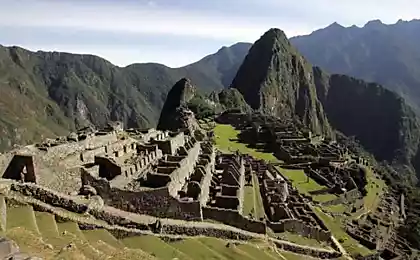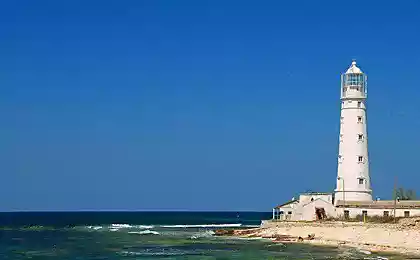651
The Church of the Intercession on the Nerl
Sixty nine million two hundred four thousand nine hundred six
The Church of the Intercession on the Nerl — the monument of the formation and flourishing of the Vladimir Principality under Andrei Bogolyubsky. This amazing man has set out to create a new capital of Russia such as Kiev, and not only to Kiev, but to Constantinople and Jerusalem. Only 7 years had built many beautiful churches in Vladimir, Bogolyubovo was built, as the crown of all, the Church of the Intercession on the Nerl. It was built on a distance of a mile from Bogolyubovo castle, at the confluence of two rivers – the Nerl and the Klyazma. The mouth of the Nerl river is a peculiar river gates of the Vladimir land on a busy trade route Nerl Klyazma, Oka river, the Volga. The Church of the Intercession stands on the shore of oxbow lakes Klyazma on the rounded grassy and trees hill. If she grows out of this hill, and one cannot help admiring how well the chosen place for the temple. But this is only at first glance seems so simple. In fact, the temple holds many secrets, and the construction and historical.
It is believed that the dedication of the temple built by Prince Andrew, could be associated with another holiday, established after the miracle that occurred on 1 August 1164, when, during the campaign against the Volga Bulgarians from the images of the Saviour, the blessed virgin of Vladimir and the cross, who was in the Russian army, began to radiate a fiery rays. With this victorious campaign, the success of which ensured the Vladimir icon of the Mother of God, "Life of Andrey Bogolyubsky" connects the construction of the Church of the Intercession. Subsequently, the temple may originally dedicated to the Savior and the Theotokos, St. Basil's was likely without the need of renaming.
Five million two hundred eighty thousand two hundred sixty five
A lot of secrets and keeps the design of the temple. Its modern look is so beautiful and done so in keeping with the surrounding landscape that it seems, and it was originally intended. However, thanks to archaeological research we know that in the days of his "youth" of the temple looked different. And a great hill-a pedestal, is the work of human hands. Initially, the temple was surrounded by open galleries with slabs, on which is arranged in "ambulatory". The gallery height was 5.5 m . in the South-Western corner of the arcade game turned into a thick wall with an internal staircase, where was the entrance to the choir.
When archaeological investigation was opened and the amazing secret of the hill. On the low-lying floodplain hollow shore the water rose in flood on more than three meters. Because of the construction there were quite a special way. First, the Foundation was laid of rubble on lime mortar to a depth of 1.60 m, to layer mainland clay. On the Foundation in two steps built the Foundation of the walls of carefully hewn, closely fitted stone, with a height of 3.70 m. inside and Outside these walls peppered clay sandy loam soil and tightly rammed. The underground part of the temple is thus of 5.30 m. Here at the mouth of the Nerl river rose an artificial hill, which has become the pedestal for the Church of the Intercession and protecting her from the treacherous spring waters. The hill was covered by a shell of white stone slabs with gutters and stairs down to the dock.
Sixty million seven hundred thirty one thousand one hundred ninety two
Eighty four million two hundred thirty eight thousand eight hundred eighty five
It turns out, modern appearance of the temple, whole and complete, only the main core. It used to look completely different over the water was rising tiers of white stone – a wide hill, the impressive belt of arcades-galleries, and then the temple itself, and finally a cylindrical turret drum with a cupola and a cross. By the way, originally the cupola was also different – not bulbous, helmet-shaped, covered with wooden "scales".
The proportions of the temple are extremely elegant and beautiful. Often this temple is compared with the image of the red girl (unlike St. Demetrius Cathedral in Vladimir – warrior-hero). And even though the style of the temple is completely normal for this time (the cross-domed, single-headed, four pillars, apses, with three longitudinal and three transverse aisles), he's elusive differs from many other churches. Everything here is aimed at achieving the maximum effect of slenderness and height. Many parts, subtle, very delicate, emphasize the vertical axis of the structure. For example, the average apse slightly raised above the side, somewhat raised and the middle window. Drum of the temple is tall and thin with narrow Windows, raised on a pedestal-a pedestal reinforces the impression of aspiration up. And the interior of the Church of the Intercession is seen as a pillar air from escaping up the vertical beams.
The temple is decorated with beautiful white stone carving, typical for the Vladimir-Suzdal architecture. Here there is a favorite image of king David surrounded by animals, real and fantastic, and rich ornaments and amazing number of reliefs of girls ' faces, which surround all three facades of the temple. This is one of the most puzzling motifs in the sculptural decoration of the Church. At the present time nineteen of these reliefs, representing the whole gallery of sculptural portraits. The performance of this beautiful white-stone carving required considerable time and great technical skill. Even a simple treatment of the stone block thought more than a thousand blows of the master tool. And at Tesco shaped stone and thread reliefs of the Church of the Intercession on the Nerl according to the calculations of researchers was to take about three and a half thousand man-days.
Eighty six million five hundred forty three thousand three hundred twenty four
After the death of the Prince, during the Prince's intestine wars, and then in the years of the Tatar devastation of the temple received the first destruction. And only in the second half of the XVII century, underwent a major renovation. At this time the building received a wooden hipped roof; the old gallery was broken. The temple was sometimes flooded during the floods, water has risen to the very Foundation, the ice fought on the ground stones. In 1784, the Church had almost disappeared forever – the rector of the Bogolyubov monastery requested permission to dismantle the protection Church on the rock for the construction of the new Holy gate to the monastery. Fortunately the destruction of the temple did not take place, and by quite prosaic reason – not agree on the price with the contractor. The temple suffered from ignorance. In 1877, the monastic authorities voluntarily, without the knowledge of the architect undertook a renovation: unnecessarily tied to the temple of the iron ties, and knocked the remains of frescoes in the drum and the dome, replaced the lost white stone plaster reliefs. Bogolyubov monastery, together with the intercession was closed in 1923 and even earlier, in 1919, the ancient white-stone monuments, including the Church of the Intercession, taken under the protection of Vladimir gubernia of the Collegium on Affairs of museums. In the early 1990-ies the temple at the insistence of the Church was transferred to the newly open Bogolyubov monastery, and then the local parish of Joachim and Anna, with submission to the Bishop. In late 1992, is widely known for the monument was inscribed on the world heritage List of UNESCO.
Thirty six million five hundred forty two thousand five hundred eighty nine
Fifteen million two hundred seventy one thousand seven hundred eighty two
Source: /users/104























